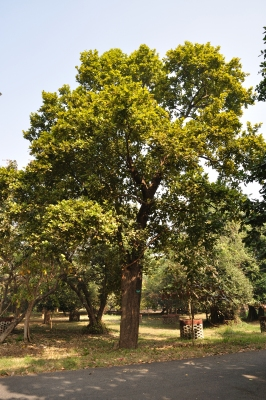Jharkhand Switch to Hindi
Sarhul Festival
Why in News?
On 1st April 2025, adivasis in Jharkhand and the larger Chhotanagpur region celebrated the new year and the arrival of spring with the Sarhul festival.
Key Points
- Worship of Nature and the Sal Tree:
- Adivasis venerate Sal trees (Shorea robusta), believing them to be the abode of Sarna Maa, the deity who protects villages from natural calamities.
- Sarhul, meaning “worship of the Sal tree,” is one of the most revered Adivasi festivals, symbolizing the union of the Sun and the Earth.
- The pahan (village priest) represents the Sun, while his wife (pahen) symbolizes the Earth.
- This sacred union is considered essential for sustaining life, as it signifies the Sun’s rays meeting the soil to enable growth.
- Adivasis begin ploughing their fields, sowing crops, and collecting forest produce only after completing the Sarhul rituals.
- The festival is celebrated by the Oraon, Munda, Santal, Khadia, and Ho tribes, each with distinct traditions.
- Evolution of Sarhul and Its Political Significance:
- In the 1960s, Adivasi leader Baba Karthik Oraon started a Sarhul procession in Ranchi, advocating for social justice and tribal identity preservation.
- Over the past 60 years, festive processions have grown into a crucial aspect of Sarhul, with Siram Toli Sarna Sthal in Ranchi becoming a major gathering site.
- The festival has also become politically significant, serving as a platform for asserting Adivasi identity.
Sal Tree
- About:
- Shorea robusta, the sal tree, is a species of tree in the family Dipterocarpaceae.
- The tree is native to India, Bangladesh, Nepal, Tibet and across the Himalayan regions.
- Description:
- It can grow up to 40 metres tall with a trunk diameter of 2 metres.
- The leaves are 10–25 cm long and 5–15 cm broad.
- In wetter areas, sal is evergreen; in drier areas, it is dry-season deciduous, shedding most of the leaves from February to April, leafing out again in April and May.
- The sal tree is known also as sakhua in northern India, including Madhya Pradesh, Odisha and Jharkhand.
- It is the state tree of two Indian states – Chhattisgarh and Jharkhand.










%20MPPCS%202025%20Desktop%20E.jpg)
%20MPPCS%202025%20Mobile%20E%20(1).jpg)










.png)
.png)











 PCS Parikshan
PCS Parikshan


